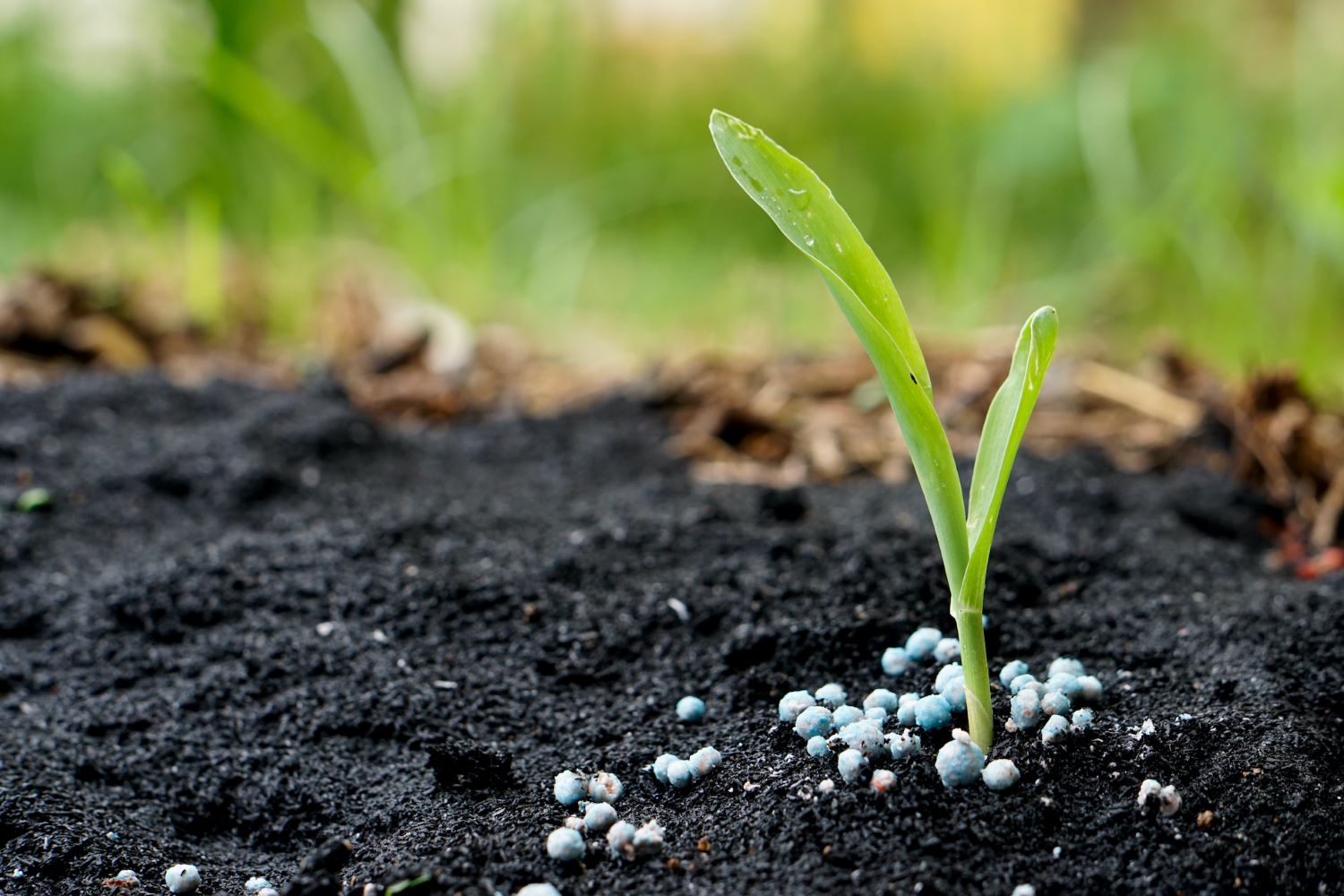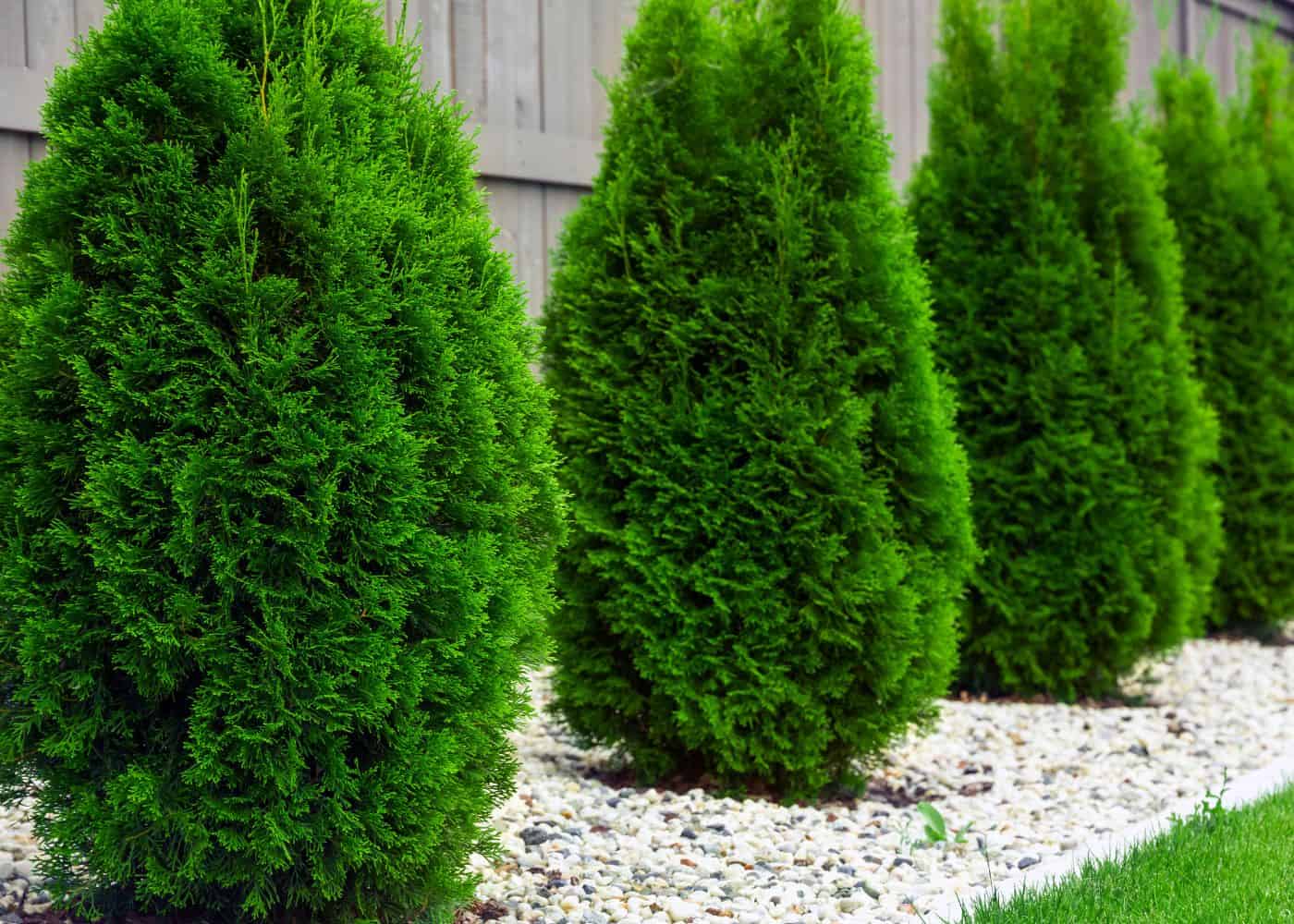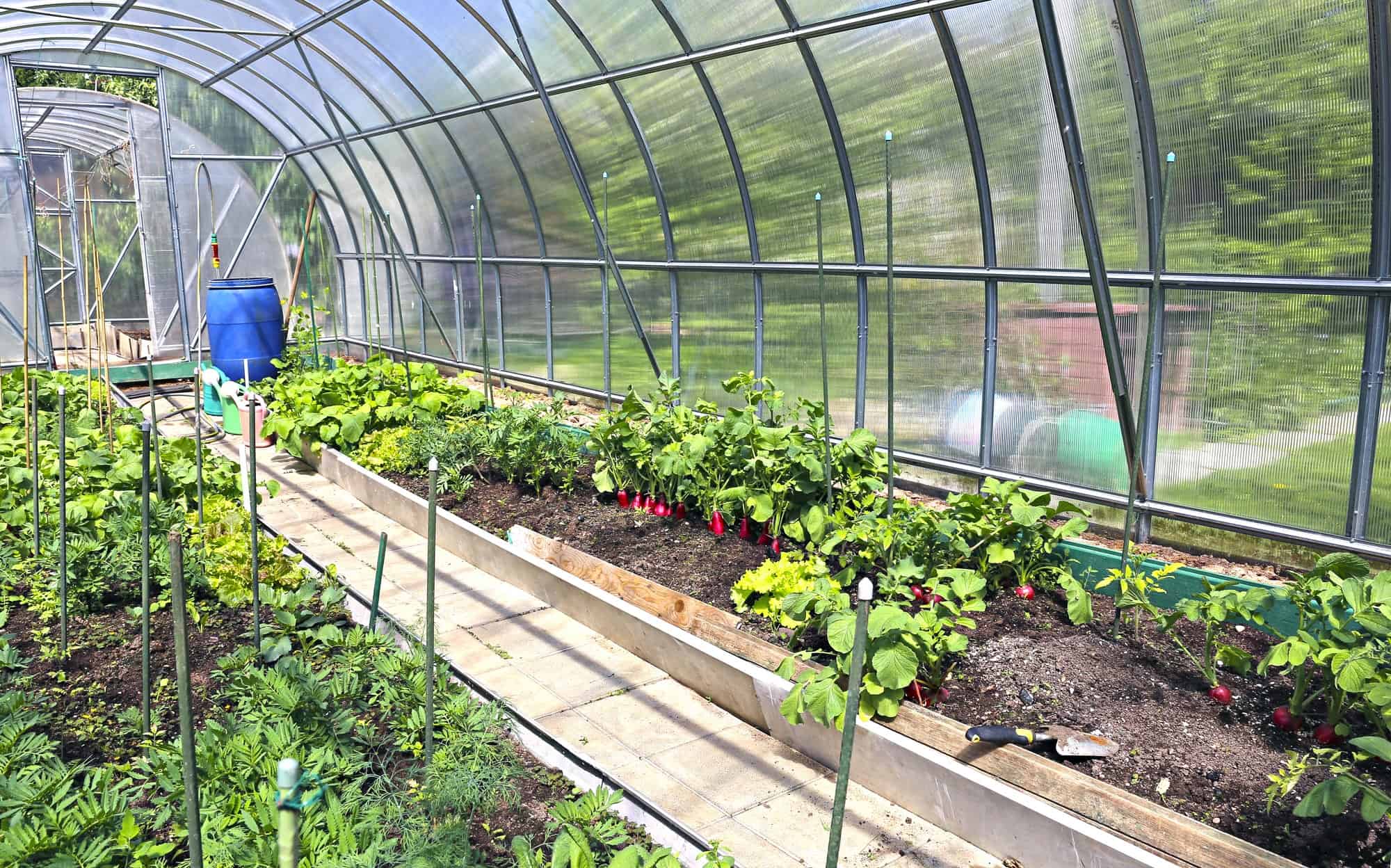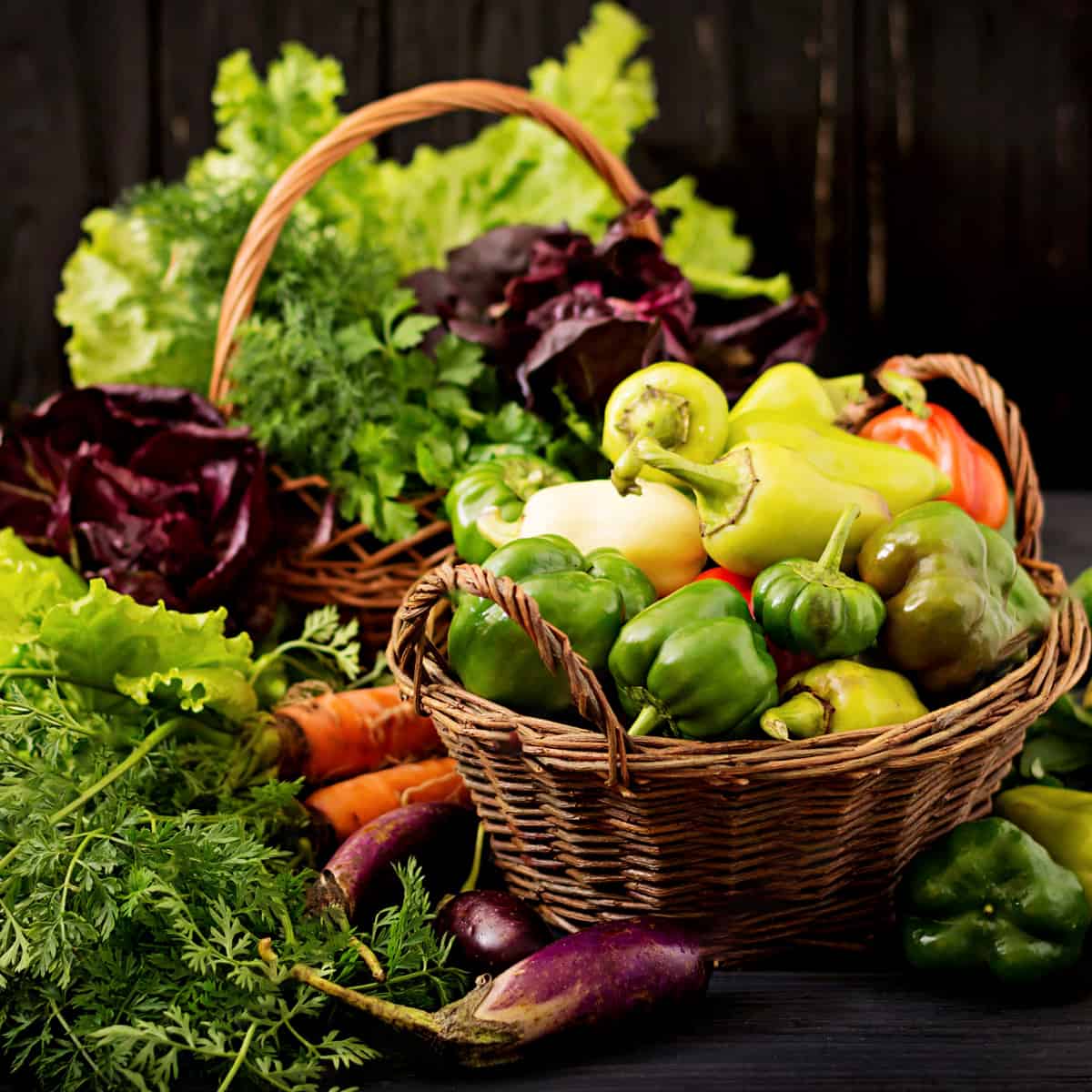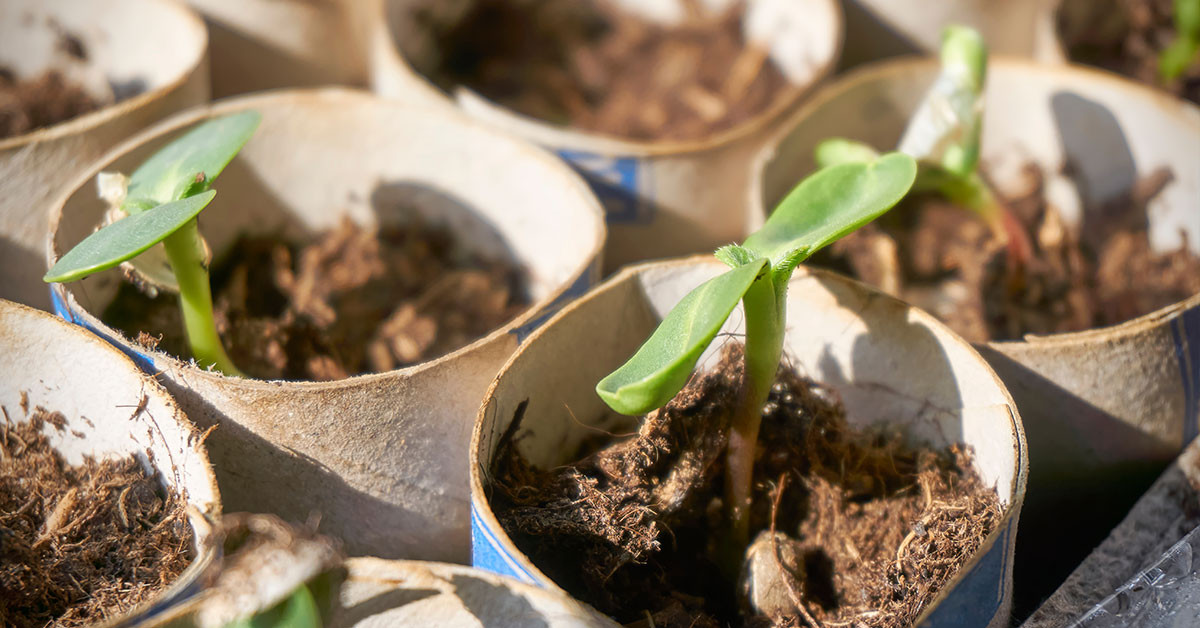Home>Gardening Tips and Tricks>Eco-Friendly Gardening>How Long Does It Take To Compost In A Tumbler


Eco-Friendly Gardening
How Long Does It Take To Compost In A Tumbler
Modified: January 22, 2024
Discover how long it takes to compost in an eco-friendly tumbler for your sustainable gardening needs. Start reducing waste and nurturing your plants today!
(Many of the links in this article redirect to a specific reviewed product. Your purchase of these products through affiliate links helps to generate commission for Chicagolandgardening.com, at no extra cost. Learn more)
Table of Contents
Introduction
Composting is a fantastic way to recycle organic waste and create nutrient-rich soil for your garden. Traditional composting methods involve constructing a compost pile and manually turning it periodically to promote decomposition. However, if you’re looking for a more convenient and efficient approach, a compost tumbler might be the perfect solution.
A compost tumbler is a sealed container designed to hold and rotate organic waste, accelerating the decomposition process. It allows you to easily mix and aerate the materials without the need for manual turning, making it an ideal choice for those with limited space or physical restrictions.
Not only does using a compost tumbler reduce your carbon footprint and divert waste from landfills, but it also produces rich compost that can be used to nourish your plants, promote healthy growth, and improve soil structure.
In this article, we will delve deeper into the world of compost tumblers, exploring their benefits, the factors that affect composting time, and how long it typically takes to produce nutrient-rich compost. Whether you’re a seasoned gardener looking to enhance your eco-friendly practices or a beginner seeking guidance on composting, this article will provide you with essential insights to help you get started.
What is a compost tumbler?
A compost tumbler is a specialized container designed for composting organic waste. It typically consists of a drum or barrel mounted on a frame that allows it to be easily rotated or turned. The design of a compost tumbler provides several advantages over traditional composting methods.
Firstly, the sealed container creates an enclosed environment, which helps to retain heat and moisture. This accelerates the decomposition process, allowing you to produce compost more quickly compared to traditional composting methods. The enclosed design also helps to contain odors, making it more suitable for urban environments or areas with strict regulations.
Secondly, the rotation mechanism allows for easier mixing and aeration of the compost. By turning the tumbler, you can ensure that the organic waste is evenly exposed to oxygen, which is essential for the breakdown of organic matter. Proper aeration helps to prevent the development of anaerobic conditions, which can generate unpleasant odors and slow down the decomposition process.
Compost tumblers come in various sizes and designs, ranging from small, compact models suitable for apartments or balconies to larger units suitable for larger households or even commercial operations. Some models have multiple compartments, allowing you to have different stages of composting simultaneously.
Many compost tumblers also come equipped with features such as convenient access doors or hatches for easy loading and unloading of organic waste, as well as built-in mixing fins or internal bars for enhanced aeration. These features make composting with a tumbler a straightforward and hassle-free experience.
Whether you’re a beginner or an experienced composter, a compost tumbler is a practical and efficient tool for turning kitchen scraps, yard waste, and other organic materials into nutrient-rich compost. It’s not only a sustainable way to manage your organic waste but also a valuable resource for improving the health and fertility of your garden soil.
Factors affecting composting time
While using a compost tumbler can significantly speed up the composting process, several factors can still influence how long it takes for the organic waste to transform into nutrient-rich compost. Understanding these factors will help you optimize your composting process and achieve faster results.
1. Size and design of the compost tumbler: The size and design of your compost tumbler can impact composting time. Larger tumblers generally have more capacity and can accommodate a greater volume of organic waste, allowing for faster decomposition. Additionally, a well-designed tumbler with adequate ventilation and mixing mechanisms can facilitate better airflow and distribution of microorganisms, accelerating the composting process.
2. Ratio of carbon to nitrogen: Composting requires a balanced ratio of carbon-rich (brown) materials, such as dry leaves or straw, and nitrogen-rich (green) materials, such as kitchen scraps or grass clippings. A proper C:N ratio of roughly 30:1 to 40:1 provides an ideal environment for microorganisms to break down the organic matter efficiently. Adjusting the C:N ratio in your compost tumbler can help regulate the decomposition rate.
3. Moisture level: Adequate moisture is crucial for the composting process. The compost pile should be moist, like a wrung-out sponge, but not overly saturated. Insufficient moisture can slow down decomposition, while excess moisture can lead to anaerobic conditions and unpleasant odors. Regularly monitor the moisture level in your compost tumbler and adjust it as needed by adding water or dry materials.
4. Temperature: Composting is a biological process that generates heat through microbial activity. Maintaining an optimal temperature range of 120°F to 160°F (50°C to 70°C) in your compost tumbler can significantly speed up decomposition. In colder regions or during cooler seasons, insulating your tumbler or placing it in a sunny spot can help maintain the necessary temperature for efficient composting.
5. Oxygen availability: Good airflow is essential for composting. Microorganisms responsible for decomposition require oxygen to thrive. Turning or rotating the compost tumbler regularly promotes aeration, ensuring an ample supply of oxygen. Some compost tumblers have built-in mixing mechanisms or aerating vents to facilitate this process. Ensuring sufficient oxygen levels will enhance decomposition and prevent the pile from becoming compacted and smelly.
6. Type and size of organic materials: The type and size of organic materials you add to your compost tumbler can affect composting time. Finely chopped or shredded materials break down more quickly than larger, bulky items. Mixing different types of organic waste, such as kitchen scraps, yard waste, and coffee grounds, helps create a diverse blend of nutrients that supports a robust composting process.
By understanding these factors and making appropriate adjustments, you can optimize your composting process and achieve faster decomposition in your compost tumbler. Remember to monitor the compost regularly and make any necessary amendments to promote a healthy and efficient composting environment.
Ideal ingredients for faster composting
Composting requires a careful balance of organic materials to create the optimal conditions for decomposition. By incorporating the right ingredients into your compost tumbler, you can speed up the composting process and produce nutrient-rich compost more quickly. Here are some ideal ingredients to consider:
1. Green materials: Green materials are rich in nitrogen and provide the necessary nutrients for microorganisms to thrive. Examples of green materials include kitchen scraps (such as fruit and vegetable peels, coffee grounds, and eggshells), fresh grass clippings, and plant trimmings. These materials break down quickly and contribute to the overall fertility of the compost.
2. Brown materials: Brown materials are carbon-rich and provide structure to the compost. They help create air pockets and absorb excess moisture. Examples of brown materials include dried leaves, straw, sawdust, shredded newspaper, and cardboard. These materials break down more slowly than green materials but are essential for maintaining a healthy C:N ratio in the compost pile.
3. Plant-based materials: Including a variety of plant-based materials in your compost tumbler can enhance the nutrient content of the compost. This can include spent flowers, weeds (avoiding those that have gone to seed or are invasive), and small prunings from shrubs or trees. Chop these materials into smaller pieces to expedite decomposition.
4. Garden waste: Utilize garden waste such as spent annual plants, old mulch, and small branches or twigs. Cut larger branches into smaller pieces to facilitate decomposition. Avoid adding diseased plants or invasive weeds to prevent the spread of pests or diseases.
5. Manure: Well-aged animal manure, such as cow or horse manure, can provide an excellent source of nitrogen and microbial activity. However, be cautious with the amount you add as excessive amounts can throw off the C:N ratio and create an odor problem. Make sure to use manure from herbivores and avoid using cat or dog waste, as it may contain harmful pathogens.
6. Water: Adequate moisture is crucial for the composting process. Aim for a moisture level similar to that of a wrung-out sponge. Regularly monitor the moisture content in your compost tumbler and add water as needed, especially during dry periods. Proper hydration helps microorganisms break down the organic matter effectively.
7. Airflow: Oxygen is essential for the decomposition process. Ensure proper airflow within your compost tumbler by turning or rotating it regularly. This helps prevent the pile from becoming compacted and promotes aerobic decomposition. Some compost tumblers have built-in mixing mechanisms or aerating vents to facilitate airflow.
By combining these ideal ingredients in your compost tumbler, you can create a balanced and nutrient-rich environment that encourages faster composting. Remember to layer the materials and mix them periodically to ensure proper decomposition. With the right ingredients and care, you’ll be well on your way to producing high-quality compost for your garden in no time.
Benefits of using a compost tumbler
Using a compost tumbler offers numerous advantages, making it an excellent choice for anyone looking to engage in eco-friendly gardening practices. Let’s explore some of the key benefits of using a compost tumbler:
1. Convenient and efficient: One of the main advantages of using a compost tumbler is its convenience and efficiency. Unlike traditional composting methods that require manual turning of the pile, a compost tumbler allows for easy mixing and aeration simply by rotating the drum. This saves you time and effort, making composting a hassle-free experience.
2. Accelerated decomposition: Compost tumblers promote quicker decomposition of organic waste due to their enclosed design, which retains heat and moisture. The combination of proper aeration, balanced moisture levels, and regular mixing helps create an optimal environment for microorganisms to break down the organic matter efficiently. As a result, you can produce nutrient-rich compost in a shorter period compared to other composting methods.
3. Space-saving: Compost tumblers are available in various sizes, including compact models suitable for small spaces like balconies or urban gardens. Their vertical design allows you to compost effectively in limited areas. If you have a small yard, live in an apartment, or simply want to maximize your space, a compost tumbler is a perfect solution.
4. Odor control: The enclosed design of a compost tumbler helps contain odors, making it a suitable choice for urban or suburban environments. Unlike open compost piles, the sealed container prevents foul smells from wafting through the air, allowing you to compost discreetly while maintaining a pleasant outdoor atmosphere.
5. Pest and weed control: Composting in a closed container like a tumbler reduces the risk of attracting pests, such as rodents or insects, to your compost pile. It also helps prevent weed seeds from spreading and germinating, as the high temperatures achieved in the tumbler during decomposition can kill weed seeds and potential pests.
6. Nutrient-rich compost: Compost produced in a tumbler is typically of high quality. The controlled environment within the tumbler promotes the breakdown of organic matter into nutrient-rich compost that is full of beneficial microorganisms. This compost can improve soil fertility, enhance plant growth, and increase the overall health of your garden.
7. Environmental benefits: Using a compost tumbler reduces waste sent to landfills, contributing to a more sustainable and eco-friendly lifestyle. Composting allows you to divert organic waste, such as kitchen scraps and yard trimmings, from the trash, reducing greenhouse gas emissions and minimizing your carbon footprint.
By utilizing a compost tumbler, you not only simplify the process of composting but also reap the benefits of faster decomposition, space-saving design, odor control, and high-quality compost production. It’s a win-win solution for both your garden and the environment.
How long does it usually take to compost in a tumbler?
The length of time it takes to compost in a tumbler can vary depending on several factors, including the type of organic waste, the size and design of the tumbler, the frequency of turning or rotating, and the environmental conditions. While composting in a tumbler generally speeds up the process compared to traditional methods, it is important to have realistic expectations regarding the composting timeline.
In general, it can take anywhere from a few weeks to several months to produce finished compost in a tumbler. With ideal conditions, such as proper moisture, a balanced carbon-to-nitrogen ratio, regular turning, and sufficient warmth, composting can occur much faster. The tumbling action helps to accelerate the breakdown of organic materials by promoting aeration and mixing, which aids in the decomposition process.
Factors such as the composition of the organic waste also play a role in the composting time. Green materials such as kitchen scraps or fresh grass clippings break down more quickly compared to brown materials like dried leaves or straw. It is important to maintain a balanced mix of carbon-rich and nitrogen-rich materials to achieve optimal results.
Additionally, environmental conditions play a role in the speed of composting. Warmth, moisture, and oxygen are essential for the activity of microorganisms responsible for decomposition. Composting in warmer climates or during the summer months can speed up the process, while composting during colder weather or in regions with low temperatures may require additional insulation or adjustments to maintain the optimal temperature range for efficient composting.
On average, composting in a tumbler can take anywhere from 4 to 8 weeks to produce usable compost. However, it is important to note that the compost may not be completely finished within this time frame. To ensure that the compost is fully broken down and free from any large organic matter, it is recommended to allow the compost to cure for an additional 2 to 4 weeks after it appears visually ready.
Remember that composting is a natural and organic process, and the timeline can vary depending on the aforementioned factors. It is essential to monitor your compost regularly, adjust the moisture levels, and give it the necessary time to fully decompose into a nutrient-rich finished product. Patience and diligence are key to successful composting in a tumbler.
Tips for faster composting in a tumbler
Composting in a tumbler already offers a quicker and more efficient way to decompose organic waste compared to traditional methods. However, there are several tips and techniques you can implement to further speed up the composting process in your tumbler. These tips will help you produce nutrient-rich compost more rapidly:
1. Chop or shred materials: Cutting or shredding your organic materials into smaller pieces increases the surface area available for microbial activity. This allows the microorganisms to break down the organic matter more efficiently and speeds up the composting process.
2. Maintain the right moisture level: Proper moisture is critical for composting. Aim for a moisture level similar to that of a wrung-out sponge. If the compost becomes too dry, add water to moisten it. Conversely, if it becomes too wet, add more carbon-rich materials, such as dried leaves or straw, to absorb excess moisture.
3. Mix green and brown materials: Ensure a balanced mix of green and brown materials in your tumbler. This helps maintain the proper carbon-to-nitrogen (C:N) ratio, which is crucial for efficient decomposition. Aim for a C:N ratio of approximately 30:1 to 40:1. Adjust the ratio by adding more carbon-rich materials if the compost smells or becomes compacted, or add nitrogen-rich materials if the process appears slow.
4. Turn or rotate regularly: Regularly turning or rotating the tumbler enhances aeration and promotes even decomposition. Rotate the tumbler at least once or twice a week to ensure that all the materials are exposed to air and microorganisms. This helps to break down the materials more quickly and prevents the compost from becoming compacted.
5. Shred woody materials: If you have woody materials, such as small branches or twigs, consider shredding them or cutting them into smaller pieces. Woody materials take longer to break down, so reducing their size helps speed up the composting process.
6. Maintain the optimal temperature: Composting is most active within a temperature range of 120°F to 160°F (50°C to 70°C). Monitor the temperature inside your tumbler using a compost thermometer and adjust as needed. Insulating or positioning the tumbler in a sunny area can help maintain the necessary warmth, especially during colder months or in cooler climates.
7. Add compost activators: Compost activators, such as finished compost or compost accelerators, contain beneficial microorganisms that can speed up the decomposition process. These can be sprinkled into the tumbler to introduce a larger population of decomposers and help break down the organic matter more quickly.
8. Avoid adding meat, dairy, and oily items: To prevent attracting pests and creating unpleasant odors, it is best to avoid adding meat, dairy products, and oily materials to your compost tumbler. These materials can slow down the decomposition process and increase the chances of attracting unwanted critters.
By following these tips, you can maximize the efficiency of composting in your tumbler and produce nutrient-rich compost in a shorter period. Remember to monitor the compost regularly, adjust the factors as needed, and be patient—the end result will be well worth the effort.
Troubleshooting common composting issues
Composting is a natural process, but sometimes challenges may arise. Here are some common composting issues and troubleshooting tips to help you overcome them:
1. Foul odor: If your compost has a strong, unpleasant odor, it may indicate an imbalance in the composting process. This can be caused by an excess of nitrogen-rich (green) materials or an insufficient carbon-to-nitrogen (C:N) ratio. To rectify the issue, add more carbon-rich (brown) materials, turn the compost more frequently to improve airflow, and ensure proper moisture levels by adjusting as needed.
2. Slow decomposition: If your compost is taking longer than expected to decompose, it may be due to a few reasons. Ensure you have a good mix of green and brown materials, maintain optimal moisture levels, and turn the compost regularly to encourage aeration. If the compost is lacking in nitrogen, consider adding nitrogen-rich materials such as grass clippings or kitchen scraps. If it lacks carbon, add more brown materials like leaves or shredded paper.
3. Pests or critters: Composting can attract pests such as rodents or flies. To deter them, avoid adding meat, dairy products, and oily items to your compost. Ensure your compost tumbler is tightly sealed to prevent pests from accessing the materials. If pests are still an issue, consider using a wire mesh or hardware cloth to further secure the tumbler. Additionally, placing the tumbler on a solid surface, such as concrete, can help deter burrowing pests.
4. Excessive moisture: If your compost is too wet and soggy, it can lead to anaerobic conditions and a foul odor. To address this issue, add more carbon-rich materials like dried leaves or shredded paper to absorb excess moisture. Ensure proper airflow by turning the compost more frequently to improve aeration. If necessary, cover the compost tumbler during heavy rainfall to prevent additional moisture accumulation.
5. Unwanted weeds or invasive plants: If your compost contains weed seeds or invasive plants, it can lead to future weed problems in your garden. To prevent this, avoid adding weeds that have gone to seed or invasive plant species to your compost tumbler. If you notice weeds or invasive plants sprouting in your compost, remove them and dispose of them separately to prevent spreading seeds.
6. Insufficient volume: If your compost tumbler isn’t filling up quickly enough, ensure you are adding a sufficient amount of organic waste. Consider collecting kitchen scraps, yard trimmings, or other organic materials from neighbors or friends to increase the volume. If needed, you can also supplement with additional brown materials like shredded newspaper or dried leaves to maintain an appropriate balance.
7. Persistent temperature issues: If you’re struggling to maintain optimal internal temperatures in your compost tumbler, insulate it with materials like straw, hay, or shredded newspaper. Placing the tumbler in a sunnier spot or using a compost heating system can also help regulate temperatures, especially in colder climates or during winter months.
By troubleshooting these common composting issues, you can overcome challenges and ensure a successful composting process. Remember to maintain a balance of green and brown materials, adjust moisture levels, turn the compost regularly, and be mindful of potential pests or weed seeds. With patience and diligence, you’ll be rewarded with nutrient-rich compost for your garden.
Conclusion
Composting in a tumbler is a fantastic way to transform your organic waste into nutrient-rich compost that benefits both your garden and the environment. The convenience, efficiency, and speed of composting in a tumbler make it an appealing option for eco-conscious gardeners, regardless of their available space.
In this article, we explored the various aspects of composting in a tumbler. We learned about the benefits of using a tumbler, such as its convenience, accelerated decomposition, space-saving design, odor control, and production of high-quality compost. We also discovered the factors that affect composting time, including the size and design of the tumbler, the carbon-to-nitrogen ratio, moisture levels, temperature, oxygen availability, and the type and size of organic materials.
Moreover, we discussed the ideal ingredients for faster composting, which include a mix of green and brown materials, plant-based waste, garden waste, manure (from herbivores), and appropriate moisture levels. We also provided tips to maximize the efficiency of composting in a tumbler, such as chopping or shredding materials, regular turning, maintaining optimal moisture and temperature, and adding compost activators.
Additionally, we addressed common composting issues and provided troubleshooting techniques to overcome challenges such as foul odors, slow decomposition, pests, excessive moisture, weed or invasive plant growth, insufficient volume, and temperature regulation.
By following these guidelines and being attentive to the composting process, you’ll be able to produce nutrient-rich compost in a shorter time frame and contribute to a more sustainable gardening practice. Remember, composting is a continuous learning process, so don’t hesitate to experiment and make adjustments based on your own unique conditions and needs.
Start composting in a tumbler today and experience the joy of transforming your organic waste into black gold – a valuable resource that nourishes your plants while minimizing waste and environmental impact.

